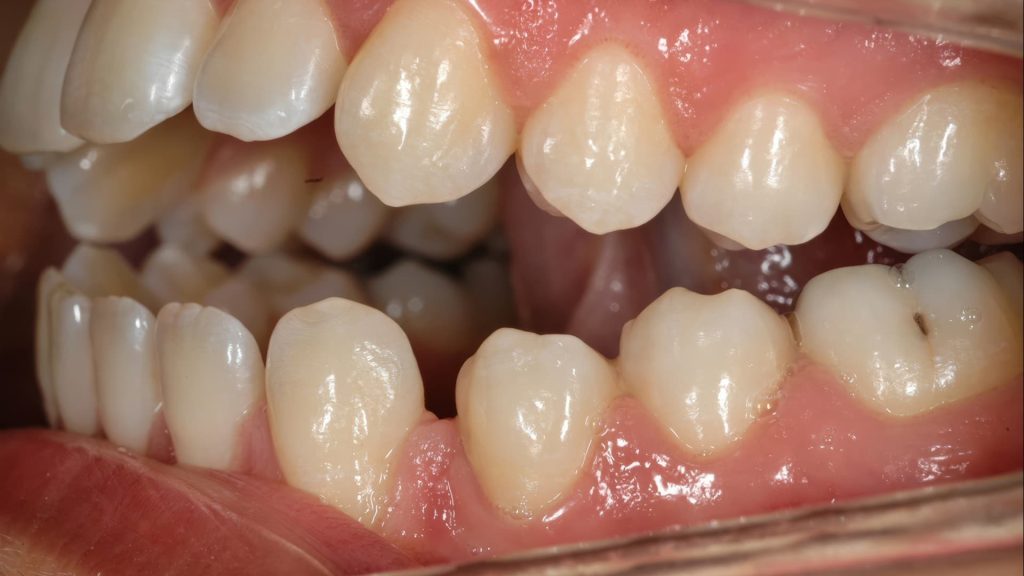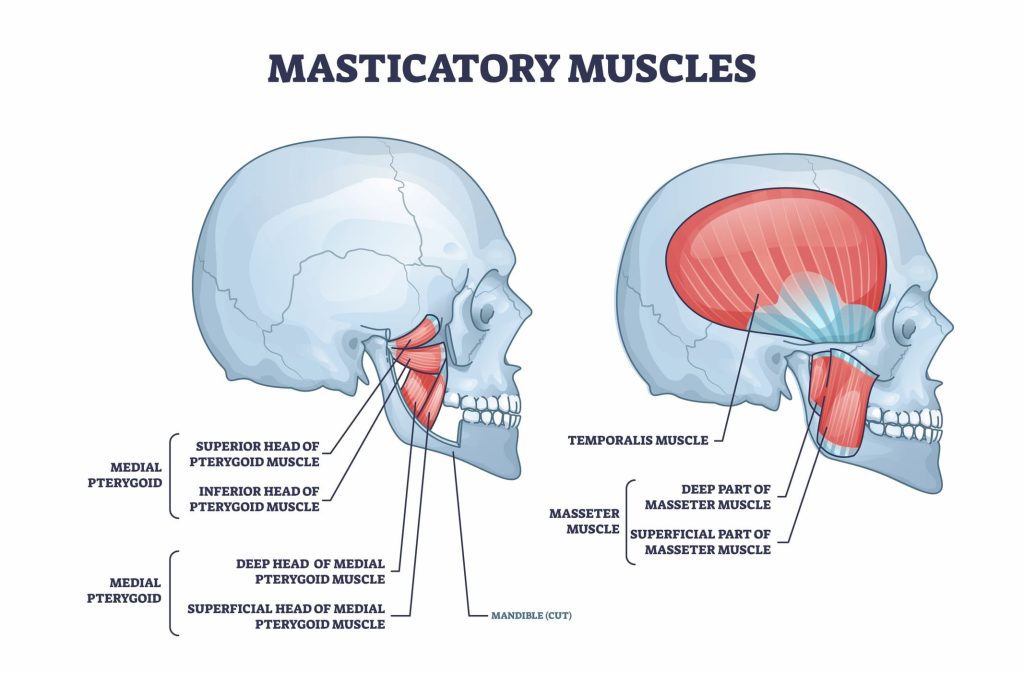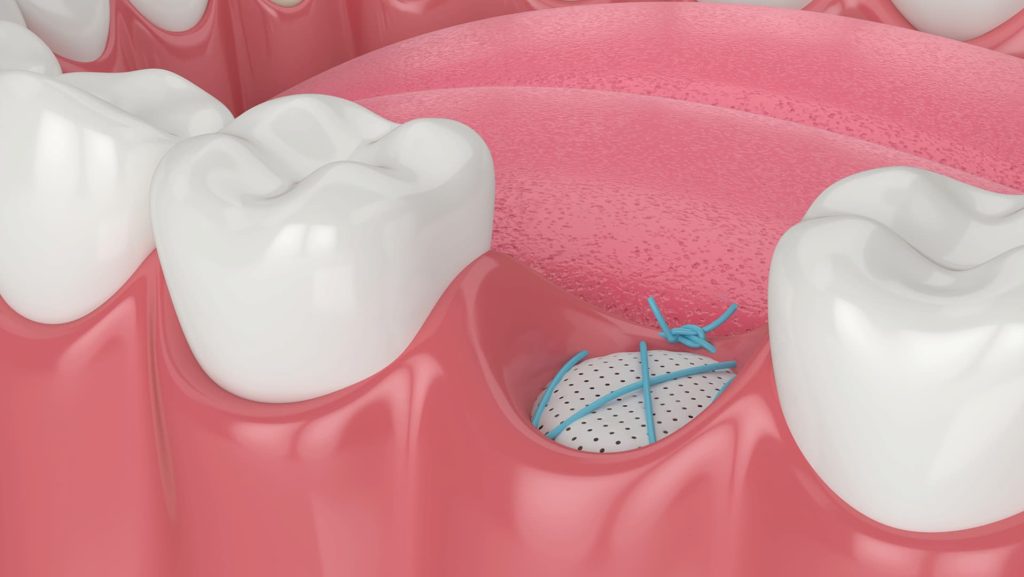- Fairfax: 703.226.2222
- Reston: 703.391.2222
- Set Up An Appointment
August, 2025
Immediate Effects on Chewing, Speech & Appearance
When a tooth is removed and not replaced, the effects are noticeable right away. Chewing becomes less efficient, especially with hard or crunchy foods, which can lead to discomfort or the need to favor one side of your mouth.

Speech may also change, particularly if the missing tooth is near the front. It can alter the way your tongue meets your teeth, sometimes causing a lisp or whistling sounds that make words less clear.
Beyond function, appearance is often the most obvious concern. A visible gap in your smile can draw unwanted attention, making many people feel self-conscious when talking, laughing, or having their photo taken.
Rapid Bone Loss & Facial Changes
When a tooth is missing, the jawbone beneath it no longer receives the stimulation it needs to stay strong. Without the pressure of chewing in that area, the bone begins to shrink, a process known as bone resorption.
This bone loss can be surprisingly fast. Studies show that within the first six months, you can lose 30–60% of the ridge width where the tooth was removed. As time passes, this loss continues, leading to noticeable changes in your facial structure.
As the bone recedes, the lips and cheeks may lose support, creating a sunken mid-face appearance that can make you look older than you are. These changes are difficult to reverse and can complicate future efforts to place dental implants or restore missing teeth.

Shifting Teeth & Misaligned Bite
When a tooth is missing for an extended period, the surrounding teeth naturally begin to shift. Neighboring teeth may tilt or drift into the empty space, while the tooth directly opposite the gap can over-erupt (move further out of its socket).
This chain reaction alters your bite, creating uneven pressure when you chew. Over time, it can lead to abnormal tooth wear, jaw discomfort, and even temporomandibular joint (TMJ) issues. Left unaddressed, these changes can make future dental treatment more complex and costly.

Elevated Risk of Gum Issues & Cavities
An untreated tooth gap does more than affect your smile; it also creates a breeding ground for oral health problems. Empty spaces easily trap food particles, leading to increased plaque buildup. This raises the risk of gum disease (periodontitis) and decay in the teeth surrounding the gap.
As teeth shift and become misaligned, daily brushing and flossing become more difficult. Hard-to-reach areas allow bacteria to thrive, further compounding the risk of cavities and periodontal issues. Left untreated, these conditions can eventually threaten the stability of neighboring teeth, leading to additional tooth loss over time.
Reduced Nutrition & Overall Well-being
Missing teeth don’t just affect your smile; they can also impact your overall health. Many people naturally avoid hard-to-chew foods, such as crunchy vegetables, fruits, nuts, and certain proteins. Over time, this can lead to nutritional gaps that affect energy levels, immune function, and even cardiovascular health.
Improperly chewed food also makes digestion less efficient. When your teeth can’t break down food adequately, the digestive system must work harder, potentially causing gastrointestinal discomfort and reduced nutrient absorption.
Replacing missing teeth restores proper chewing function, allowing you to maintain a balanced diet that supports your whole-body wellness.
TMJ Stress & Jaw Discomfort
When a tooth is missing, the bite no longer distributes forces evenly. This imbalance can place extra strain on the jaw muscles and temporomandibular joints (TMJ), the hinges that connect your jaw to your skull.
Over time, this added stress may lead to jaw pain, clicking or popping sounds when opening and closing the mouth, frequent headaches, or even neck discomfort. If left uncorrected, these issues can become chronic and require more complex treatment to restore balance to the bite.

Snowball Effect: Domino Tooth Loss
Leaving a tooth unreplaced often sets off a chain reaction in your mouth. As neighboring teeth shift, weaken, or develop decay, they become more vulnerable to damage or loss.
Meanwhile, the jawbone continues to deteriorate, making it harder to support remaining teeth. Over time, this combination of bone loss and misalignment can lead to progressive, multiple tooth loss.
When replacement is delayed for years, restoring your smile typically requires bone grafting, complex implant procedures, or larger restorations to rebuild the lost structure and stability.

How to Prevent or Reverse Damage to an Extracted Tooth
The best way to avoid long-term complications after a tooth extraction is to plan ahead. One of the most effective early interventions is socket preservation, also known as a ridge graft. This procedure places bone graft material into the empty socket immediately after extraction to help maintain the natural shape of the jawbone and gum tissue.
Preserving this structure not only improves cosmetic outcomes but also makes future dental implant placement easier and more predictable.
Timing matters; replacing a missing tooth within 3 to 6 months is key. Acting within this window significantly reduces the risk of shifting teeth, bone loss, and the need for more involved procedures down the line.
Replacement Options: Compare Your Options
Replacing a missing tooth promptly not only restores your smile but also protects your long-term oral health. Today’s options range in cost, function, and longevity. Here’s a quick comparison:
Dental Implant
The gold standard in tooth replacement, implants are placed directly into the jawbone, mimicking a natural tooth root. They help prevent bone loss, offer exceptional stability, and restore natural chewing function and aesthetics.
Dental Bridge
A fixed prosthetic that fills the gap by anchoring to the adjacent teeth. While not placed in the bone, bridges are a reliable and long-lasting solution when implants aren’t ideal. They do, however, require shaping of the neighboring teeth.
Removable Partial Denture
An economical option that clips onto nearby teeth. While less invasive, it’s also less stable, can affect speech and chewing, and doesn’t prevent bone shrinkage in the area of the missing tooth.
Ease Into a Preventive Routine
Not sure if your missing tooth is starting to cause problems? Here’s a quick self-check:
- Have you noticed changes in how you chew or speak?
- Does your bite feel off or uneven?
- Are your gums red, swollen, or trapping food near the gap?
Even subtle changes can signal the beginning of larger issues. The earlier you act, the more options you have and often with less time, cost, and complexity.
Final Step: Get Tooth Replacement
If you’re missing a tooth, or facing an extraction, don’t wait to explore your options. At Optimal Dental Center, we make it easy to take the next step with a free dental consultation tailored to your needs.
Our advanced technology and expert team provide:
- On-site 3D imaging to assess bone and tooth structure
- Socket preservation grafting to maintain your natural smile shape
- Dental implant placement for long-term stability and function
- A clear cost breakdown with financing options to fit your budget
Take the guesswork out of what comes next. Reclaim your comfort, confidence, and complete smile.
